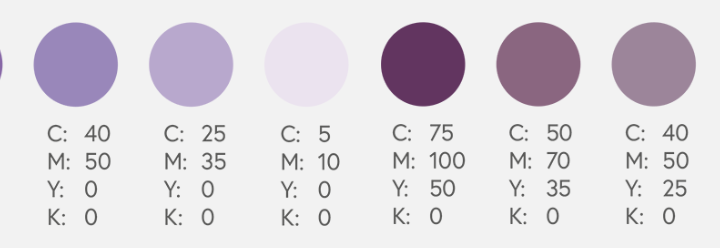What follows is a real-life, real-time text report coming to me last Sunday morning from a young adult I know who was in attendance at one of the largest Southern Baptist churches in America. Please keep in mind, this was not a high holy day of any kind, either secular or religious. It was, however, the 21st anniversary of 9-11.
- Today at (Name) Baptist Church we are back on critical race theory and the woke world
- Oh, and we pledged allegiance to the Christian flag
- Didn’t know there was a Christian flag
- This dude is so (expletive deleted) crazy
- This church is literally a political rally every week
- Idk if they have ever talked about the Bible or anything
- He has said woke like 75 times

Mark Wingfield
At the risk of beating a dead horse, let me just say again: And we wonder why people aren’t showing up for church anymore.
Except that the church where this blend of Christian nationalism was being preached on 9-11 is an enormous church with multiple campuses. People are still flocking to hear this. What we can easily deduce is that this is a deeply red congregation in a deeply red state. This is supply and demand.
Later that afternoon, I was catching up on social media when I ran across a post from a nonprofit called Campus Pride that ranks the best and worst college campuses in America for LGBTQ students, the campuses where they feel more safe and where they feel most in danger.
As I pored over both lists, I noticed not a single faith-based school shows up on the list of safest campuses but nearly every Baptist school I know shows up on the list of most dangerous campuses — often with extensive documentation of why.
And we wonder why young people are walking away from the faith.
Except that most of these faith-based schools that are unsafe for LGBTQ students are doing quite well on enrollment, thank you very much. Parents of kids who are heteronormative feel safer sending their darlings to colleges where they might not be exposed to dangerous new ideas and new people. What we can easily deduce is that most faith-based schools — especially the Baptist ones — understand supply and demand, too.
“Find me a university campus in America where LGBTQ students feel fully safe and students who oppose LGBTQ identify feel fully safe.”
Find me a university campus in America where LGBTQ students feel fully safe and students who oppose LGBTQ identify feel fully safe. I don’t think such a place exists.
I’m not talking about a campus where one view or the other is tolerated. I’m talking about a campus where the two opposing views are celebrated equally.
 This is not possible because the two ideas by definition cancel each other out.
This is not possible because the two ideas by definition cancel each other out.
Yes, there are some campuses and some churches where “both sides” exist together, but that always comes at the cost of one view being subservient to the other. This is where colleges and churches are alike: It’s not easy being purple.
“Purple” is the label given to spaces where red (Republicans) and blue (Democrats) mix together to form a third color. Typically, this assumes a 50/50 mix of red and blue. While that produces a beautiful shade on a color chart, it produces stalemate in other areas of life. Exhibit A is the current U.S. Senate. It’s as purple as can be, and getting anything significant done there requires a tie-breaking vote from the vice president.
Now imagine you’re the pastor of a “purple” church. The first question I want to ask you is this: What shade of purple? By that I mean not only what’s the split between red and blue but also what’s the intensity of the red and blue.
 Look at the color chart at the top of this article. This shows some of the possible ink combinations that achieve varieties of purple in the CMYK printing process. CMYK is an additive color process used by printers. C stands for cyan (blue), M stands for magenta (red), Y stands for yellow, and K stands for black. To show 0000 on a CMYK chart is to put no ink on the page. A printing press mixes these four basic colors together in various proportions to bring to life what we in the printing biz used to call “four-color” images.
Look at the color chart at the top of this article. This shows some of the possible ink combinations that achieve varieties of purple in the CMYK printing process. CMYK is an additive color process used by printers. C stands for cyan (blue), M stands for magenta (red), Y stands for yellow, and K stands for black. To show 0000 on a CMYK chart is to put no ink on the page. A printing press mixes these four basic colors together in various proportions to bring to life what we in the printing biz used to call “four-color” images.
The darker the shade of purple, the more red and blue are required to make it. The more pale the purple, the less red and blue are required. And notice also that some variations of purple include a smattering of a third color, usually yellow.
“It is impossible to characterize one kind of purple church. It all depends on the mix and intensity.”
This color chart helps us understand why it is impossible to characterize one kind of purple church. It all depends on the mix and intensity.
But here’s the bottom-line truth: Purple churches only survive when the minority and majority groups agree to live within the ratios they have.
 I’m reminded of a wise question one friend asked a group of other friends when our church was headed toward a more inclusive stance on fully welcoming LGBTQ Christians. The friend who favored the new stance said to a group of others who disliked the new stance: “Look, I’ve been in the minority here 25 years but I’ve stayed because I love the church and the people. Would you be willing to do the same — to stay with us — even though you will be in the minority now?”
I’m reminded of a wise question one friend asked a group of other friends when our church was headed toward a more inclusive stance on fully welcoming LGBTQ Christians. The friend who favored the new stance said to a group of others who disliked the new stance: “Look, I’ve been in the minority here 25 years but I’ve stayed because I love the church and the people. Would you be willing to do the same — to stay with us — even though you will be in the minority now?”
Regardless of whatever verbal answer was given that day, the real answer became known in the months ahead when nearly all — not all, but nearly all — of those who had been in the majority determined they could not bear to be in the minority and left to find other churches where they could once again be in the majority.
Some pastors feel called to lead purple churches — and God bless them. However, this is getting increasingly hard to do for four reasons:
- The intensity of red and blue has increased dramatically. Partisanship is at an all-time high. More people are not just a little bit Democrats or a little bit Republicans. They carry their political and social views intensely. There is less and less room for compromise.
- The issues are less negotiable. You cannot be a little bit for or a little bit against LGBTQ inclusion. You’re either OK with ordaining gay deacons or you’re not. Same with America’s racial history. You’re either for teaching children the full story of America’s racial history or you’re not. Abortion used to be an exception to this rule, with many Christians staking out a middle category of opposing abortion except in cases of rape, incest or danger to the life of the mother. Sadly, that is not an option on the ballot today.
- Simple things get interpreted as major signs. The code words are so loaded today, and the tolerance for compromise is so missing, that pastors must measure every word in a sermon or prayer or they will be accused of shading their language toward the other side.
- Truth has been put up for auction. Let’s say this once more with feeling: There is no way to have a civil conversation between two views when one of those views is rooted in fantasy. Truth and lies do not inhabit the same universe, the same language, the same reality. When pastors try to keep the peace in congregations where some people believe in truth and some people believe in lies, the brethren (and sisters) cannot dwell together in unity, as Psalm 133 urges.
 Last week, I received an angry letter from a reader who accused me of trying to tell her what truth means when she ought to be able to have her own idea of truth. But that’s not how truth works. We cannot bring opposing definitions of truth to church and expect to understand the word of God.
Last week, I received an angry letter from a reader who accused me of trying to tell her what truth means when she ought to be able to have her own idea of truth. But that’s not how truth works. We cannot bring opposing definitions of truth to church and expect to understand the word of God.
The foremost reason purple churches are in danger is that the very reading of the Bible and the preaching of its redemptive purpose cannot find fertile ground in minds that are closed to truth. The gospel of Jesus Christ dwells richly in open minds and hearts of all colors who value the very words of Jesus: “I am the truth.”
Mark Wingfield serves as executive director and publisher of Baptist News Global. His forthcoming book, Honestly: Telling the Truth about the Bible and Ourselves, is available for pre-order from Fortress Press.
Related articles:
Concern for our nation at Bubba-Doo’s | Opinion by Charles Qualls
Divisions over abortion and other life and death issues: the problem is not purple churches | Opinion by Mark Wingfield
Why aren’t we better at differing? | Opinion by Charles Qualls
In a contentious election year, wisdom seeks a third way | Opinion by Rhonda Abbott Blevins


